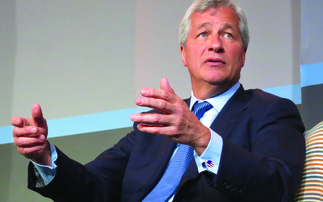The direct effect of the oil price on the global macroeconomic picture is far from clear. While oil does affect inflation and growth it is far from the primary driver, and higher oil prices can impact countries in very different ways. In addition, supply and demand considerations cannot be ignored, but these factors are not cause for alarm at present. While the situation is certainly fluid, we are not jumping to any conclusions on the longer-term price trend of oil based on a thus far delimited - if dramatic - event.
A fluid situation
If higher oil prices persist due to major supply shortages this would be a headwind for global growth, but even this would be unlikely to tip the balance on the overall growth trajectory. Similarly, some investors fear the impact of oil on inflation. But while the relatively subdued oil price has certainly contributed to lower inflation since mid-2014, low inflation is a structural issue and oil is not the determining factor here. In the US, a higher oil price does negatively impact the consumer, but it also boosts capital expenditures in the US energy sector, effectively reducing the impact of oil's inflationary pressures. In addition, some evidence suggests that the link between oil price shocks and inflation isn't as strong as it once was. The US Federal Reserve's explicit inflation fighting mandate, and other factors such as lower energy consumption per dollar of GDP, has weakened that relationship since the common association of the oil shocks in the 1970s with stagflation.
That is not to entirely discount the effects of the oil price on growth, but any sustained upward shift would have disparate effects globally. There are two sides to the coin. Firstly, oil producing nations benefit from higher oil prices, and the currencies of major oil producers like Russia and Canada jumped on the news. Conversely, major consumers in emerging markets, such as India, South Africa, Turkey, and Indonesia are hurt by a higher oil price (unless this is largely growth rather than supply driven), as this exacerbates current account deficits and weakens already vulnerable currencies. The decline of over 40 per cent in the crude price in the fourth quarter of 2018 was a major tailwind for emerging markets in the early part of this year, and while the price has recovered from the $42 trough, we aren't seeing prices at the point where they have a major impact. We will be keeping a close eye on those markets which are most vulnerable to a higher oil price if it remains elevated.
Saudi Arabia
As with any commodity, supply and demand factors are also very important, and it was fears over supply disruption that led to the spike. However, Saudi Arabia has significant capacity, and the country's willingness to maintain supply should not be underestimated. The US also affirmed its commitment to the supply side, with President Donald Trump's first response to the attack stressing willingness to use the Strategic Petroleum Reserve "to keep markets well supplied." The demand side of the equation is a key factor as well. Weaker global growth could very well result in a reduction in demand for petroleum products, and minimize the risk of oil prices remaining high.
No party gains from an escalation in tensions, but there is always the potential for the political situation to deteriorate. While the possibility for short-term spikes is never absent, investors should avoid fixating too much on one day moves. It is more important to build resilient portfolios that can withstand the pressures of a price at much higher or much lower levels for a sustained period, instead of trying to predict intraday volatility.
Important information
This information is for investment professionals only and should not be relied upon by private investors. Past performance is not a reliable indicator of future returns. Investors should note that the views expressed may no longer be current and may have already been acted upon. Changes in currency exchange rates may affect the value of investments in overseas markets. Investments in small and emerging markets can also be more volatile than other more developed markets. Reference to specific securities should not be construed as a recommendation to buy or sell these securities and is included for the purposes of illustration only. Issued by Financial Administration Services Limited, authorised and regulated by the Financial Conduct Authority. Fidelity, Fidelity International, the Fidelity International logo and F symbol are trademarks of FIL Limited.













